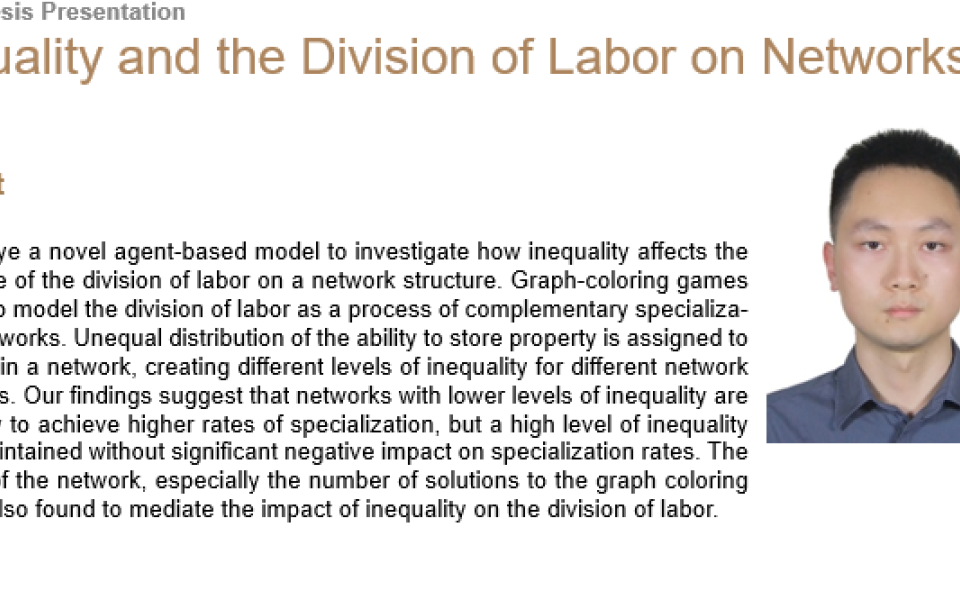Abstract
We employe a novel agent-based model to investigate how inequality affects the emergence of the division of labor on a network structure. Graph-coloring games are used to model the division of labor as a process of complementary specialization on networks. Unequal distribution of the ability to store property is assigned to the nodes in a network, creating different levels of inequality for different network populations. Our findings suggest that networks with lower levels of inequality are more likely to achieve higher rates of specialization, but a high level of inequality can be maintained without significant negative impact on specialization rates. The structure of the network, especially the number of solutions to the graph coloring game, is also found to mediate the impact of inequality on the division of labor.
